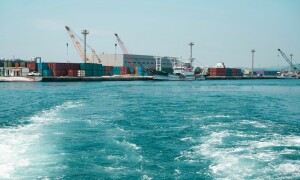To impose or to retract, the GIDC imposition and legality has been up and down the hill many times since its promulgation. As the name suggests, Gas Infrastructure Development Cess (GIDC) was introduced in 2011 to collect taxes on gas development projects like Iran-Pakistan (IP) pipeline project, Turkmenistan-Afghanistan-Pakistan-India (TAPI) pipeline project, and infrastructural projects like construction of an LNG terminal and LPG supply enhancement project.
However, the levy has been contentious since the beginning. With FY15 target of Rs145 billion, the general industry was levied Rs300/mmbtu of cess in Federal Budget FY15. Later, the government had to take back its decision and bring down the target by Rs50 billion after protests from various industries. The tax was then slashed to Rs150/mmbtu for general industries; and while cement sector was completely exempted, the power sector was brought down to Rs100/mmbtu.
While the decision of reducing GIDC was a good omen for exports and other industries as well as overall growth, the GIDC was challenged by Peshawar High Court; it was later termed illegal by the apex court last year due to the way it was imposed. The Supreme Court declared the gas infrastructure development cess as a fee and not a tax. Adding further to the Federal Government’s irony, it also ordered the government to fully refund the funds collected as GIDC to the consumers through adjustment in their gas bills.
The tussle over GIDC did not end here, and the government decided to push for promulgation of an ordinance to nullify the ruling of the apex court that suspended the collection of GIDC. Once again it seems that GIDC will be imposed retrospectively since this time it possess the legal cover of GIDC Bill 2014. The government has stressed that the tax would be used to fund various gas development projects in order to bridge the gas gap, as it does not have the adequate funding capacity.
Be that as it may, there are many lacunas in the imposition of GIDC. First is the conspiracy about the usage of the funds collected under the head. Both IP and TAPI gas pipelined have vanished in thin air, while no significant activity on gas on infrastructure building has taken place except for the recent LNG import. In such a situation, it is plausible that over Rs100 billion collected has been largely consumed to meet the fiscal gap.
Another issue with GIDC pertains to discontentment of provincial governments, as gas is a provincial subject and a tax imposed by the Federal Government is a violation of the rights of the provinces under the 18th Amendment to the Constitution. Even now, the Federal Government is facing stiff reservation from Sindh and KPK government regarding GIDC’s retrospective imposition.
Furthermore, the government has no choice but to push forward for GIDC’s revival because the IMF has always shown keenness for the government to levy this tax to enhance fiscal revenues. In its sixth review of extended finance facility, the IMF has quoted legal challenges in GIDC as one of the key reasons for the shortfall in fiscal revenues.
And last but not the least; the business community has also had its reservations against GIDC, calling it the government’s practice to squeeze money from the industry for projects that hardly ever materialize. The moral of the story: stop gap ‘jugaroo’ measures to raise revenues won’t cut in today’s day and age.
BR100
12,588
Increased By
72.3 (0.58%)
BR30
37,879
Decreased By
-72.9 (-0.19%)
KSE100
117,316
Increased By
414.5 (0.35%)
KSE30
36,116
Increased By
183.7 (0.51%)



















Comments
Comments are closed.